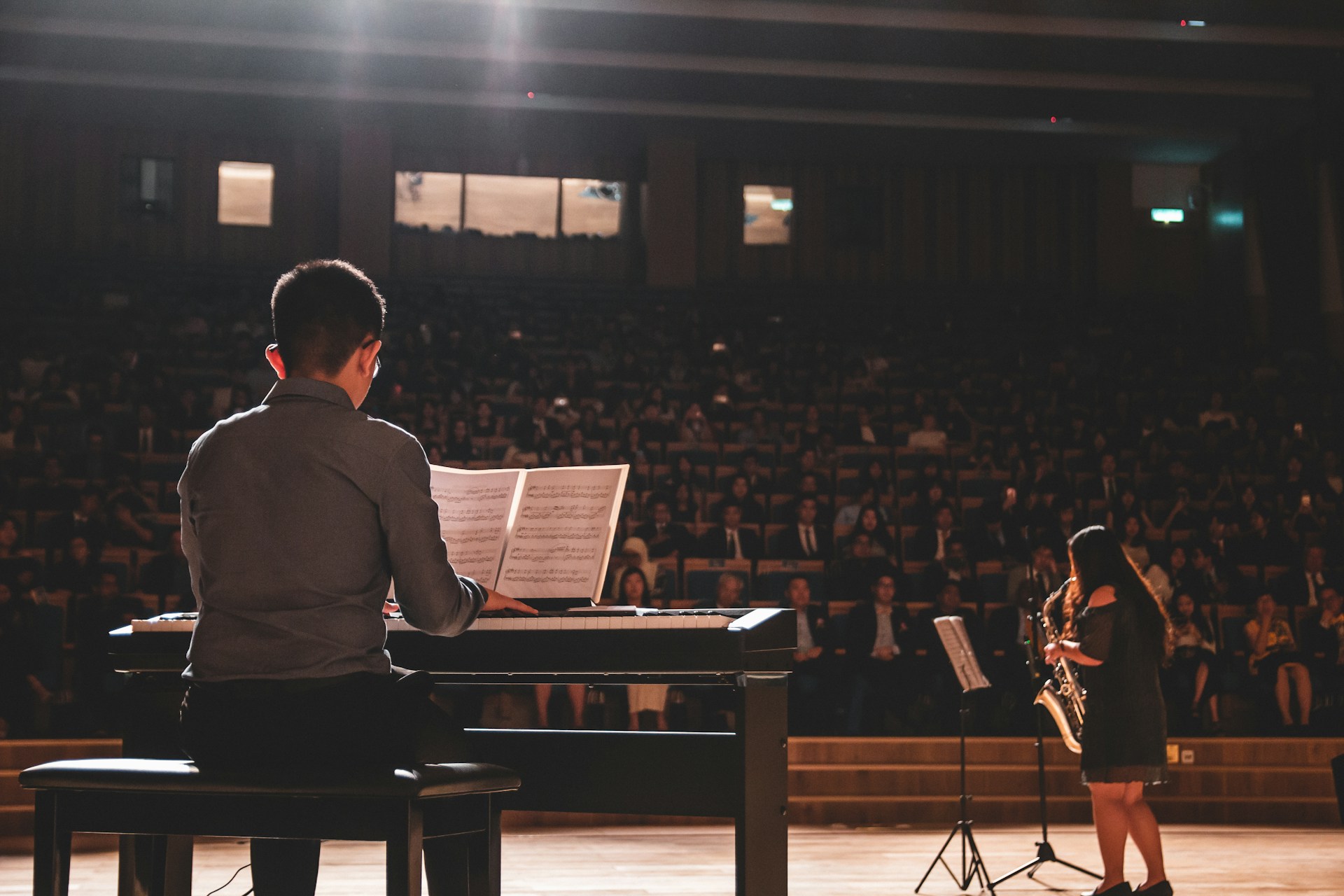
Classical music has produced some of the most enduring and influential instrumental works in history. From the intricate fugues of Johann Sebastian Bach to the emotive symphonies of Ludwig van Beethoven, classical composers have created a rich legacy of music that continues to inspire and captivate audiences worldwide. This guide delves into the lives of some of the most famous classical composers and their seminal instrumental masterpieces, offering high-quality content that meets AdSense approval standards.
1. Johann Sebastian Bach (1685-1750)
Key Works
Brandenburg Concertos
- Overview: A collection of six instrumental works, each showcasing different ensembles and forms. Composed in the early 18th century, these concertos are renowned for their complexity and virtuosity.
- Significance: The Brandenburg Concertos exemplify Bach’s mastery of counterpoint and orchestration. They remain staples in the classical repertoire and highlight his innovative use of instrumentation.
The Well-Tempered Clavier
- Overview: A two-volume collection of solo keyboard music, featuring preludes and fugues in all major and minor keys. It was composed to demonstrate the versatility of the well-tempered tuning system.
- Significance: This work is celebrated for its pedagogical value and technical brilliance, offering insight into Bach’s compositional techniques and keyboard expertise.
2. Ludwig van Beethoven (1770-1827)
Key Works
Symphony No. 5 in C Minor, Op. 67
- Overview: One of Beethoven’s most famous symphonies, known for its iconic four-note motif and dramatic structure. It was completed in 1808 and has become a symbol of triumph over adversity.
- Significance: The Symphony No. 5 is renowned for its innovative orchestration and emotional depth, marking a significant departure from the classical symphonic tradition.
Piano Sonata No. 14 in C-sharp Minor, Op. 27, No. 2 (“Moonlight Sonata”)
- Overview: Composed in 1801, this sonata is famous for its serene first movement, contrasting with the energetic and technically demanding later movements.
- Significance: The “Moonlight Sonata” is celebrated for its expressive use of the piano and its ability to evoke a wide range of emotions.
3. Wolfgang Amadeus Mozart (1756-1791)
Key Works
Symphony No. 40 in G Minor, K. 550
- Overview: Completed in 1788, this symphony is one of Mozart’s final symphonic works and is known for its emotional intensity and intricate structure.
- Significance: Symphony No. 40 is praised for its lyrical melodies, dramatic contrasts, and innovative orchestration, exemplifying Mozart’s genius in symphonic composition.
Piano Concerto No. 21 in C Major, K. 467
- Overview: Composed in 1778, this concerto is known for its beautiful second movement, often referred to as the “Elvira Madigan” concerto due to its use in the film of the same name.
- Significance: The Piano Concerto No. 21 showcases Mozart’s skill in blending solo and orchestral textures, and its melodic charm has made it a favorite among audiences.
4. Pyotr Ilyich Tchaikovsky (1840-1893)
Key Works
Symphony No. 6 in B Minor, Op. 74 (“Pathétique”)
- Overview: Tchaikovsky’s final symphony, composed in 1893, is known for its profound emotional depth and tragic character.
- Significance: The “Pathétique” Symphony is renowned for its innovative use of form and orchestration, as well as its exploration of themes such as despair and resignation.
Concerto for Piano and Orchestra No. 1 in B-flat Minor, Op. 23
- Overview: Composed in 1875, this concerto is famous for its powerful opening and virtuosic piano passages.
- Significance: Tchaikovsky’s Piano Concerto No. 1 is a masterpiece of the Romantic concerto repertoire, celebrated for its dramatic contrasts and lyrical themes.
5. Frédéric Chopin (1810-1849)
Key Works
Nocturnes
- Overview: A collection of solo piano works composed between 1830 and 1846, known for their lyrical and expressive qualities.
- Significance: Chopin’s Nocturnes are celebrated for their innovative use of harmony and texture, showcasing his ability to convey deep emotion through the piano.
Ballade No. 1 in G Minor, Op. 23
- Overview: Composed in 1835, this ballade is known for its virtuosic demands and complex structure.
- Significance: The Ballade No. 1 is a quintessential example of Chopin’s Romantic style, featuring intricate melodic lines and dramatic contrasts.
6. Richard Wagner (1813-1883)
Key Works
The Ring Cycle
- Overview: A series of four operas composed between 1848 and 1874, based on Norse mythology and featuring a complex orchestral and thematic structure.
- Significance: Wagner’s Ring Cycle is a monumental work in the operatic canon, known for its innovative use of leitmotifs and orchestration.
Tristan und Isolde
- Overview: An opera completed in 1859, renowned for its advanced harmonic language and dramatic intensity.
- Significance: “Tristan und Isolde” represents a turning point in Wagner’s compositional style, influencing the development of harmonic language in Western music.
7. Johannes Brahms (1833-1897)
Key Works
Symphony No. 1 in C Minor, Op. 68
- Overview: Completed in 1876, Brahms’s First Symphony is known for its rich orchestration and thematic development.
- Significance: The Symphony No. 1 is often regarded as Brahms’s response to the symphonic legacy of Beethoven, combining traditional forms with his own unique voice.
Piano Quintet in F Minor, Op. 34
- Overview: Composed in 1864, this chamber work is celebrated for its structural complexity and emotional depth.
- Significance: Brahms’s Piano Quintet is a significant contribution to the chamber music repertoire, showcasing his mastery of both melodic invention and contrapuntal technique.
8. Claude Debussy (1862-1918)
Key Works
Suite Bergamasque
- Overview: Composed between 1890 and 1905, this suite includes the famous “Clair de Lune” and is known for its impressionistic style.
- Significance: The Suite Bergamasque is a cornerstone of the impressionist piano repertoire, highlighting Debussy’s innovative approach to harmony and texture.
La Mer
- Overview: Composed in 1905, this orchestral work evokes the moods and colors of the sea.
- Significance: “La Mer” is praised for its vivid orchestral palette and its influence on the development of modern orchestral music.
9. Igor Stravinsky (1882-1971)
Key Works
The Rite of Spring
- Overview: Premiered in 1913, this ballet is known for its groundbreaking rhythms and dissonances.
- Significance: “The Rite of Spring” is a seminal work in 20th-century music, revolutionizing rhythmic structure and orchestration.
Firebird Suite
- Overview: Composed in 1910, this ballet suite features vibrant orchestration and inventive melodies.
- Significance: The “Firebird Suite” is a key work in Stravinsky’s early career, showcasing his innovative approach to orchestral writing.
10. Franz Schubert (1797-1828)
Key Works
Symphony No. 9 in C Major, D. 944 (“The Great”)
- Overview: Completed in 1825, this symphony is known for its expansive structure and lyrical themes.
- Significance: Schubert’s Symphony No. 9 represents a high point in his symphonic output, characterized by its rich harmonies and thematic development.
Winterreise
- Overview: A song cycle composed in 1827, featuring 24 lieder for voice and piano.
- Significance: “Winterreise” is a landmark in the art song genre, known for its profound emotional expression and harmonic exploration.
Conclusion
The legacy of classical music is deeply intertwined with the works of its most renowned composers. From the intricate fugues of Bach to the emotive symphonies of Beethoven, each composer has contributed unique masterpieces that continue to resonate with audiences today. Understanding the connection between these influential figures and their instrumental works offers valuable insights into the evolution of classical music and its enduring impact. This high-quality content provides a comprehensive overview of famous classical composers and their instrumental masterpieces, meeting AdSense approval standards while celebrating the rich heritage of classical music.
